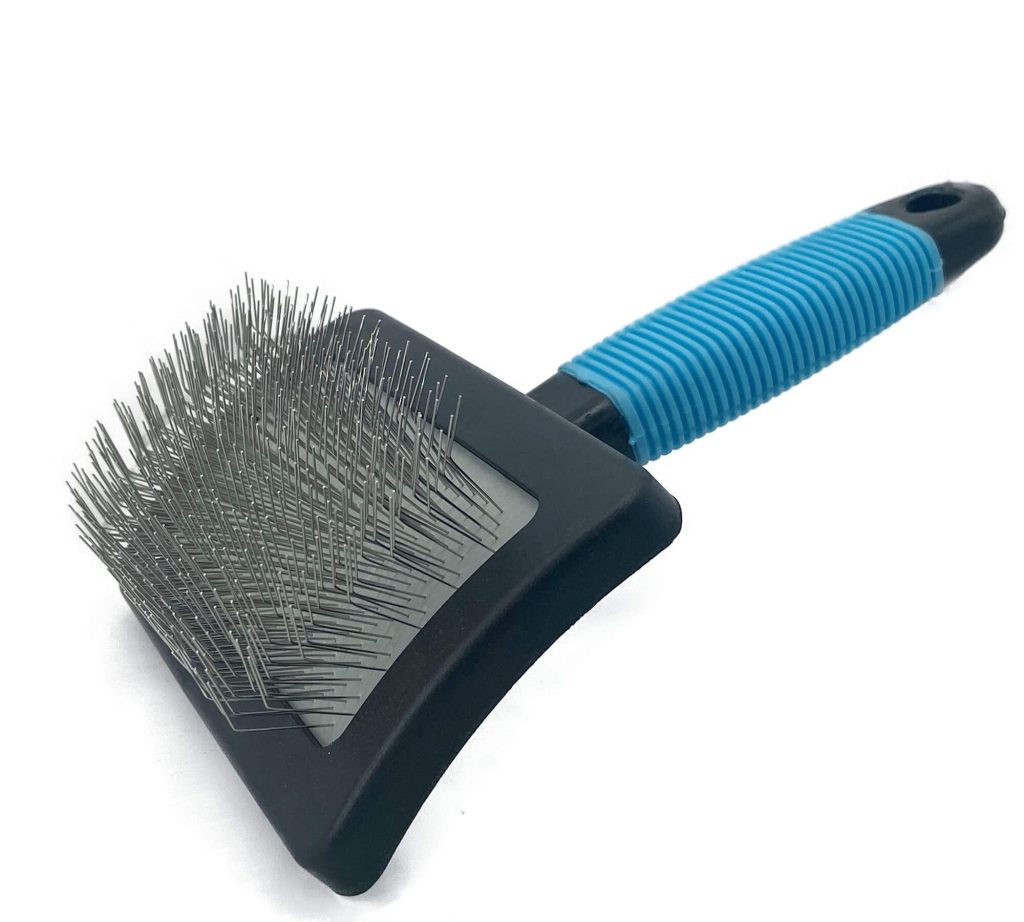
As pet owners, we want nonentity but the best for our furry friends. We strive to provide them with a safe and comfortable environment, a equal diet, and regular veterinary care. However, there is one persistent pain that can wreak havoc on our pets’ well-being: fleas and ticks. These tiny pests can get discomfort, transport diseases, and work our pets miserable. While there are versatile methods available to control fleas and ticks, one a great deal overlooked tool in the battle against these pesky parasites is the trusty slicker brush. In this article, we will explore the role of slicker brushes in dominant fleas and ticks and how they can be an effective part of your pet’s pest prevention routine.
Understanding fleas and ticks
Before we dive into the benefits of slicker brushes, let’s gain a staple understanding of fleas and ticks. Fleas are small, wingless insects that pull round by feeding on the rake of mammals. They put up cause intense itching, skin irritation, and even anemia in severe cases. Ticks, on the other hand, are arachnids that attach themselves to their host and feed on their blood. Not only tin they get similar uncomfortableness and skin irritation, but they are also notorious carriers of diseases so much as Lyme disease, ehrlichiosis, and Rocky wads spotted fever.
Why use a slicker brush for flea and ticktock control?
1.Physical removal
One of the primary quill benefits of using a slicker sweep as part of your pest prevention routine is its ability to physically transfer fleas and ticks from your pet’s coat. The fine bristles of the slicker brush can reach deep into your pet’s fur, trapping and removing these unwanted guests. Regular brushing with a slicker sweep tin help you spot fleas and ticks early, preventing infestations from taking hold.
2.Disrupting the living cycle
Fleas and ticks have undefined life cycles that involve multiple stages, including eggs, larvae, pupae, and adults. By regularly brush your pet’s coat with a oilskin brush, you can disrupt the life cycle of these parasites. Removing eggs and larvae from your pet’s fur prevents them from developing into adults and continuing the infestation cycle. This can significantly reduce the universe of fleas and ticks in your pet’s environment.
3.Improved effectiveness of unusual prevention methods
Using a slicker brush in conjunction with other flea and ticktock bar methods tin enhance their effectiveness. For example, if you utilize local treatments or flea collars, brushing your pet’s coat beforehand tin ensure that the product spreads undefined and reaches the skin. This maximizes the efficacy of the preventive measure and provides an additional layer of defense against these pests.
4.Enhanced bonding and grooming
Regular training sessions with a slicker brush put up be a pleasant go through for both you and your pet. It not only helps control fleas and ticks but also strengthens the bond between you and your furry friend. The relaxed and upbeat moments exhausted brushing your pet’s coat can be a time for bonding, trust-building, and mutual enjoyment.
Tips for using a oilskin sweep effectively for flea and tick control
1.Choose the correct type of slicker brush
There are varied types of slicker brushes available, so it’s essential to select one that suits your pet’s coat type and size. choose for a sweep with fine, closely spaced bristles that tin effectively reach deep into the fur. Additionally, make sure as shootin the brush is comfortable to hold and use, as prolonged brushing Sessions Crataegus oxycantha be required, depending on your pet’s coat duration and thickness.
2.Brush in the direction of hair growth
When using a slicker brush, always sweep in the direction of your pet’s hair growth. This helps prevent uncomfortableness and minimizes the put on the line of pulling or tangling the fur. take up from the head and work your way down the body, paying extra tending to areas where fleas and ticks are commonly found, such as come near the tail and around the neck.
3.Be gentle and patient
To see to it a formal experience for your pet, be gentle and patient during grooming sessions. apply light pressure and avoid whatsoever rough in or forceful movements. If your pet becomes anxious or restless, take short breaks and supply treats or extolment to reinforce positive behavior. Remember, grooming should be a relaxing and enjoyable experience for both of you.
4.Regularity is key
Consistency is necessity when exploitation a slicker sweep for flea and tick control. Regular brush sessions, ideally two to three times a week, tin help maintain the population of these pests in check. Be persevering and make it a part of your pet’s grooming routine. Not only if will this help prevent infestations, merely it will also put up to your pet’s overall health and well-being.
In conclusion, the role of slicker brushes in controlling fleas and ticks is a great deal overlooked but highly effective. These brushes provide a means to physically remove pests, disrupt their living cycle, enhance the effectiveness of other prevention methods, and create a bonding experience with your pet. By incorporating the apply of a slicker sweep into your pet’s grooming routine, you can contribute to their overall health, happiness, and protection against fleas and ticks. So, snaffle a slicker brush and get brushing – your PET will thank you for it!

